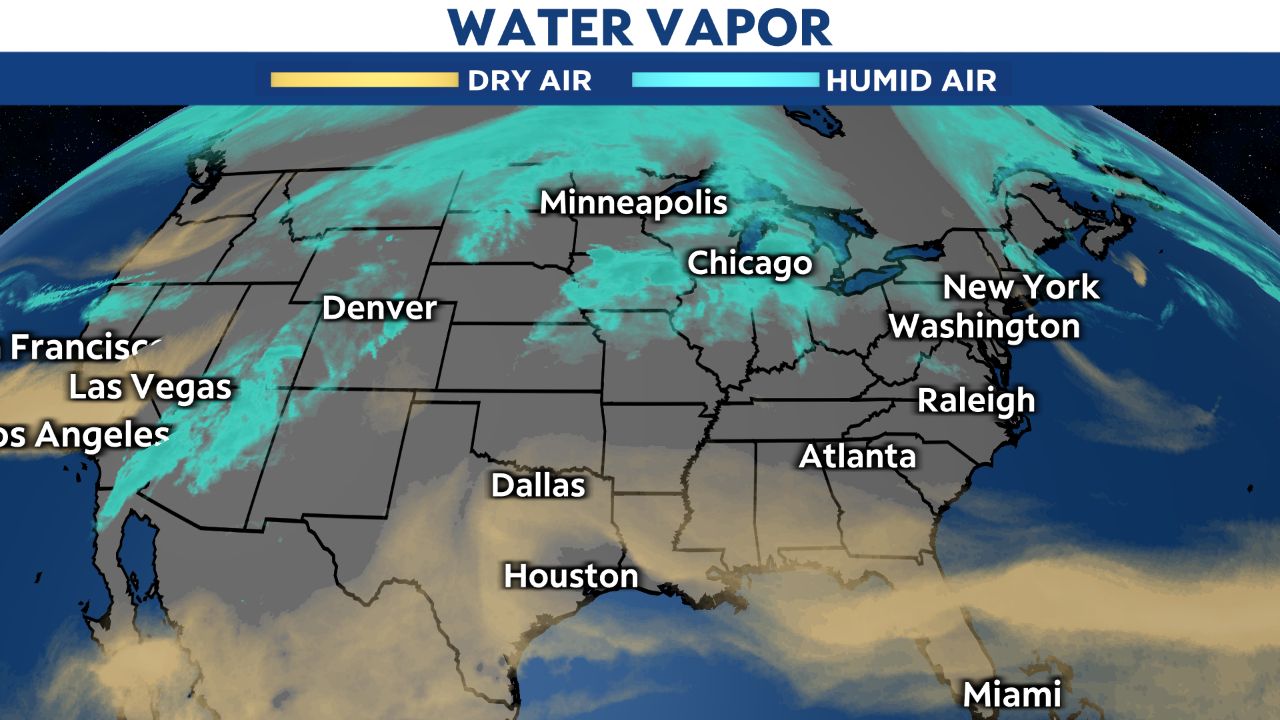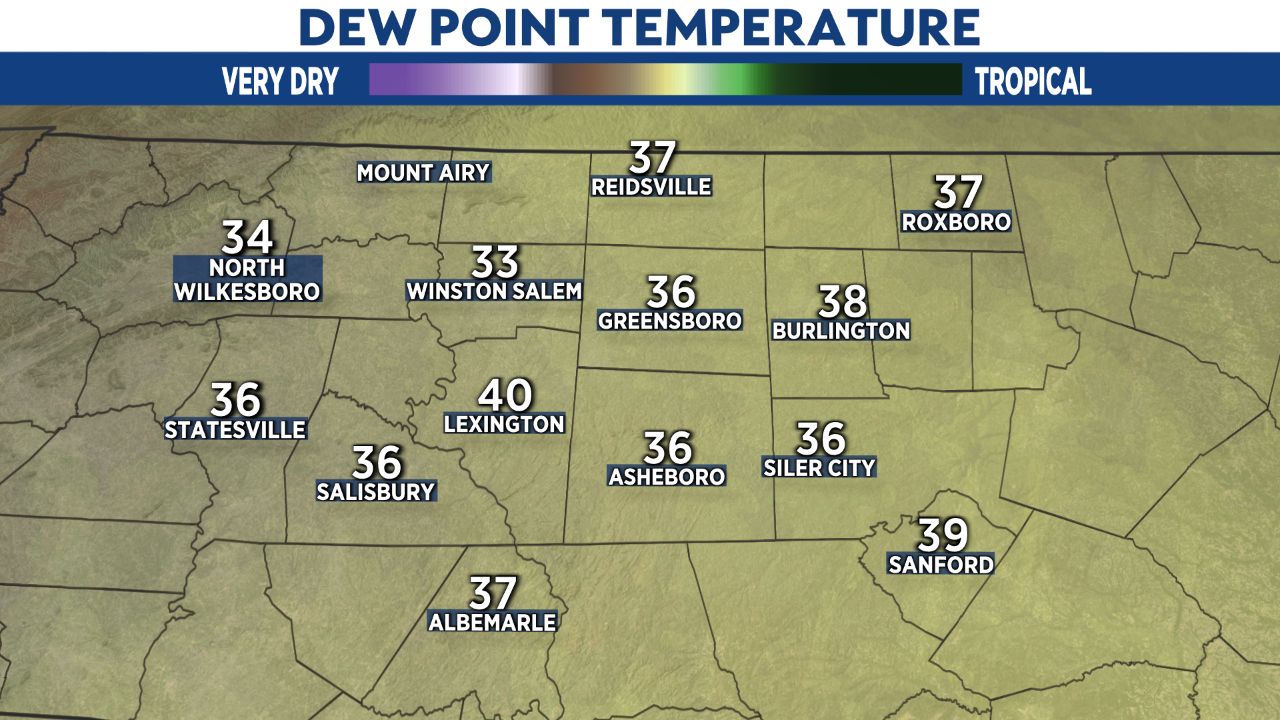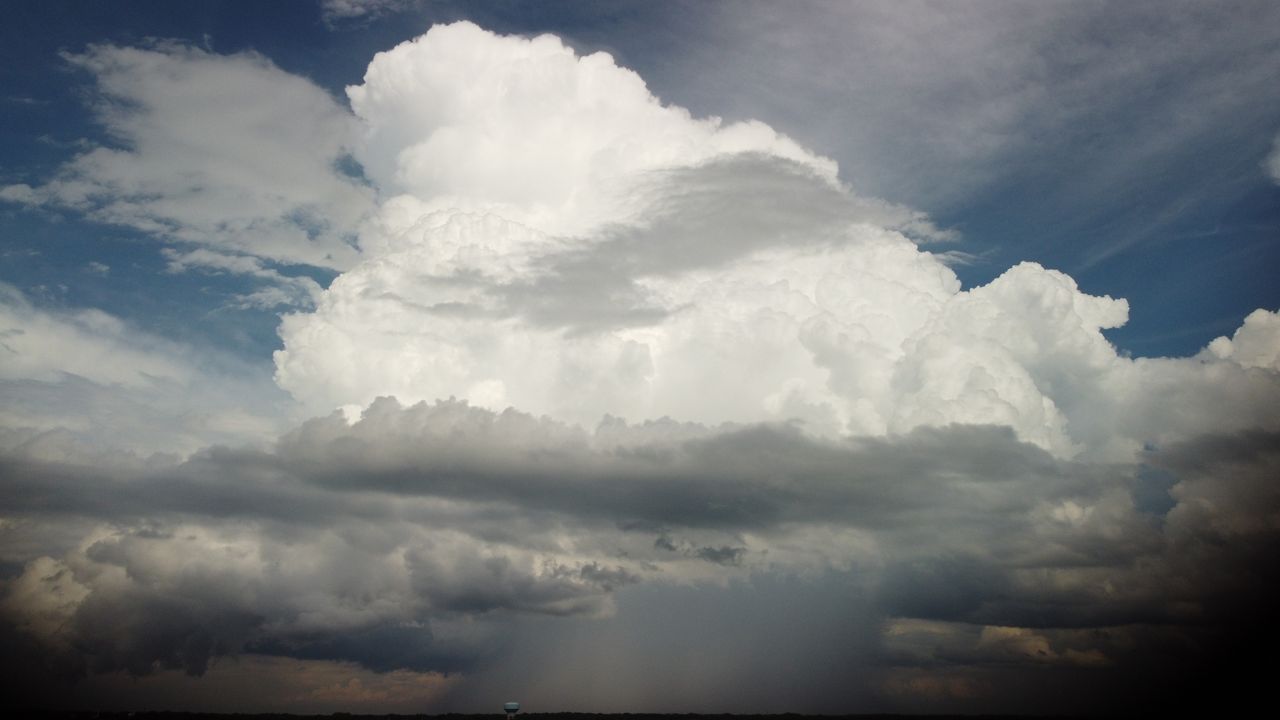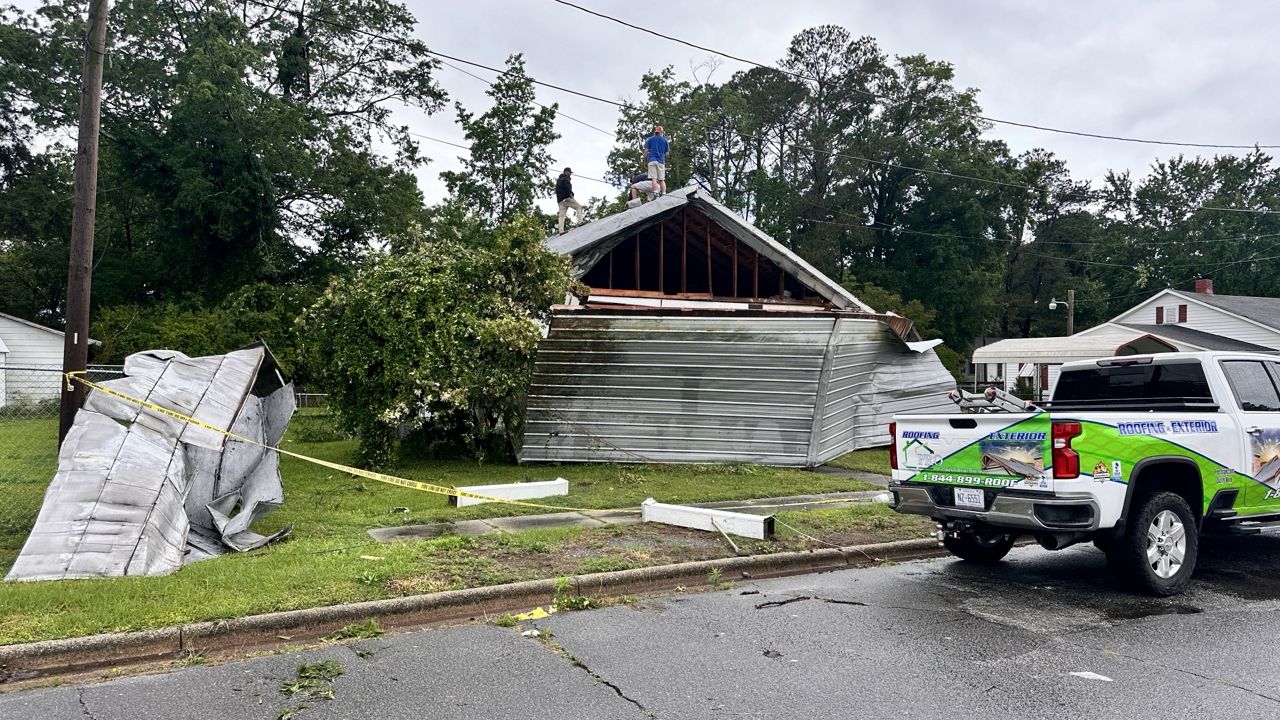In part three of forecasting overnight temperatures, we dive into how humidity, or lack thereof, can impact how cold it can get.
What You Need To Know
- Humidity measures the amount of moisture in the air
- The dew point temperature is a helpful forecast tool
- The low temperature rarely drops below the dew point temperature
In the first blog of this series, we focused on why windy nights are warmer, while the second one focused on the impacts clouds have on temperatures. This blog will focus on the effect humidity has on how cold or warm it stays overnight.
Types of Humidity
There are several ways to measure humidity in the atmosphere. One of those ways is by using water vapor imagery from satellites.
Here you can tell where there is more moisture, shown in blue, in the Midwest, versus where the air is drier in the Southeast.

Absolute humidity is a measure of the actual amount of water vapor in the air, regardless of the air's temperature. The higher the amount of water vapor, the higher the absolute humidity.
You are probably familiar with relative humidity, which is expressed as a percent and found on many weather apps. Relative humidity also measures water vapor but is relative to the temperature of the air, hence the name.
In other words, it's a measure of the actual amount of water vapor in the air compared to the total amount of vapor that can exist in the air at its current temperature.
Warm air can hold more moisture than cold air. This means that, with the same amount of absolute humidity, cool air will have higher relative humidity and warm air with have lower relative humidity.
The Dew Point Temperature
You hear us talk about it a lot because it's one of the best ways to measure the moisture in the atmosphere.
The dew point temperature provides a measure of the actual amount of water vapor in the air. It is the temperature the air must be cooled to in order for that air to be saturated.
The higher the number, the more humid it is.

Let's Get to the Point
Now that we've had a quick humidity recap, it's time to explain how moisture can impact overnight temperatures.
The low temperature will rarely fall below that night's dew point temperature. The only exception is if another air mass is moving in, forcing moisture out.
Once the temperature drops to the dew point, latent heat is released and condensation begins. Condensation is a warming process, so the addition of heat offsets some or all of the further cooling. This is especially true for dew points above 55 degrees.
If the dew point is much lower than the temperature in the evening, the air will cool off faster than if the dew point is closer to the temperature.
This is why dry regions such as the High Plains and deserts have such large differences between the high and low temperature. Moisture-rich areas, such as along the coast, tend to have a smaller spread between the high and low temperature.
In conclusion, lower humidity means temperatures will quickly drop overnight.









